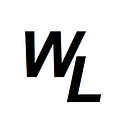Unlike custom props, the “children” prop is a special reserved prop to pass down, and it is used to pass down whatever is held between the opening and closing tags of the component.
So for example, if we had the following code:
return (
<>
<button className="close" onClick={() => setIsOpen(!isOpen)}>
X
</button>
{isOpen && (
<div className="steps">
<div className="numbers">
<div className={step === 1 ? "active" : ""}>1</div>
<div className={step === 2 ? "active" : ""}>2</div>
<div className={step === 3 ? "active" : ""}>3</div>
</div>
<p className="message">
Step {step}: {messages[step - 1]}
</p>
<div className="buttons">
<Button onClick={handlePrevious}>Previous</Button>
<Button onClick={handleNext}>Next</Button>
</div>
</div>
)}
</>
);the data being passed onto the Button components from “children” would be:
Previous
NextAs these are what are between the opening and closing tags.
So you could pass down “children” into the component like this:
function Button({ onClick, children }) {
return (
<button
style={{ backgroundColor: "#7950f2", color: "#fff" }}
onClick={onClick}
>
{children}
</button>
);
}And therefore the Button would show the text “Previous” and “Next”
